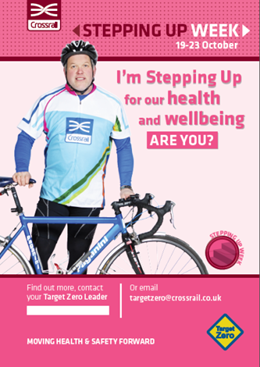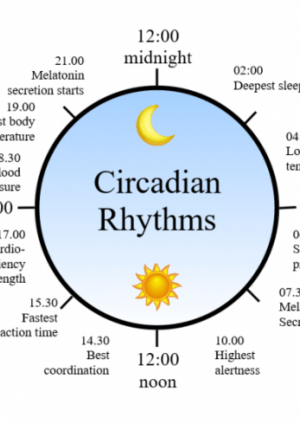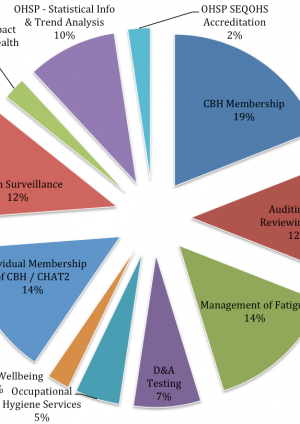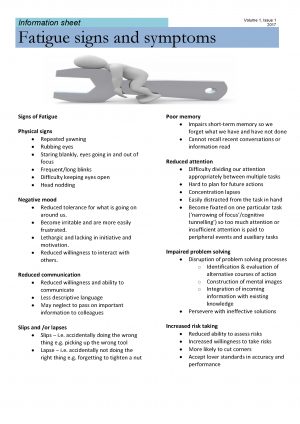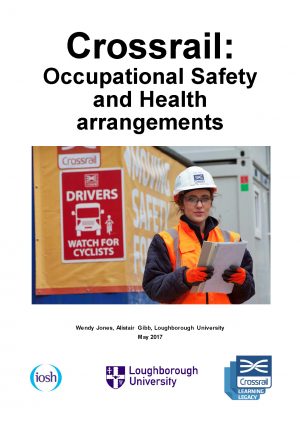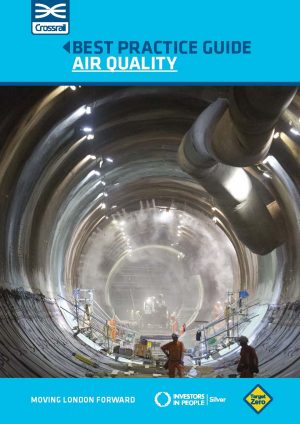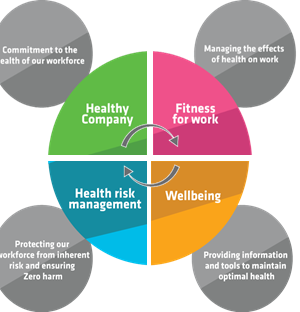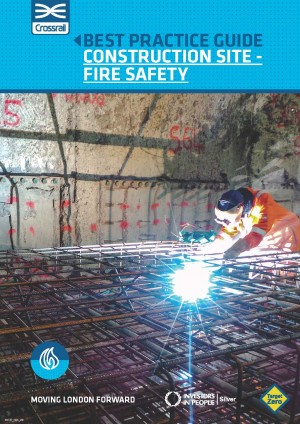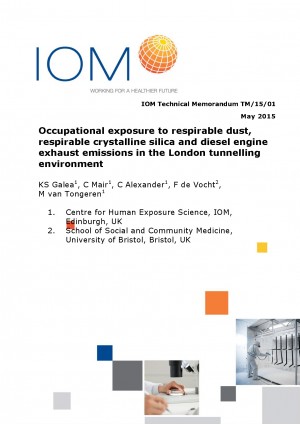Occupational Health and Wellbeing
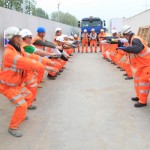
The health and wellbeing of the workforce is a crucial element in Crossrail’s performance and progress. It is estimated that the UK construction industry reported 31,000 new cases of ill-health in 2012.
Health and wellbeing is a key focus for Crossrail, with every effort made to raise the bar across the industry. This message and the fundamental requirements for the management of health and wellbeing at work has been delivered to its employees through the Crossrail Occupational Health Standard and replicated in the Works Information for all contracts.
In 2013 Crossrail’s Health and Wellbeing Strategy set out the vision to further improve delivery of related activities across the project. This was based on achieving the minimal requirements and was developed with Principal Contractors, to agree a baseline for good occupational health standards across the project. This exercise identified some key OH risks, which led to a series of research projects being instigated with academic partners. This resulted in the Air Quality Best Practice Guide and the Fatigue Toolkit.
By 2014 contractors were achieving the minimum requirements as standard practice across the project and hence, Crossrail instigated a review of the strategy to develop a model that went beyond minimum requirements to good practice.
The review was undertaken with the Principal Contractors through the audit process and sought to simplify the OH strategy to move away from OH being focused on health assessment and physical wellbeing (such as life style risk factors), but instead to include key elements such as fitness to practice and health risk management. It also changed the emphasis of wellbeing to mental health as well as physical health. This resulted in the production of the Four Corner Stone model as shown below and a new Occupational Health and Wellbeing Strategy which started being rolled out in 2016.
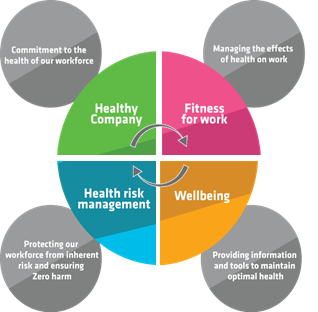
A case study reviewing the performance of the Occupational Health Strategy was undertaken in 2017. Key OH documents available are:
Crossrail Occupational Health Standard – minimum requirements replicated in the Works Information
Crossrail’s Health and Wellbeing Strategy 2013
Crossrail’s Health and Wellbeing Strategy 2016
Air Quality Best Practice Guide
| Summary |
Publication date |
Document Type |
Topic area: Occupational Health and Wellbeing This report describes how Crossrail looked to develop its Occupational Health and Wellbeing strategy and worked with an external partner to define, improve and implement its approach.
The paper will be of use to any organisation looking to expand their approach to improving the wellbeing and mental health of their work...
|
13/03/2018 |
Micro-report |
Topic area: Occupational Health and Wellbeing In conjunction with external partners Crossrail developed and used a defined six-step programme to implement its occupational health and wellbeing strategy. One of the steps identified was to create a local champion network to provide a localised approach to embed the programme across the various projects located on ...
|
13/03/2018 |
Micro-report |
Topic area: Occupational Health and Wellbeing Having defined and implemented its new health and wellbeing strategy Crossrail wanted to evaluate its impact. To this end it commissioned the “Have Your Say” wellbeing survey. The surveys were to be used to inform and steer the implementation of the Wellbeing programme and see if the strategy was having a positive ...
|
13/03/2018 |
Micro-report |
Topic area: Occupational Health and Wellbeing Wearable technology can now help detect, manage and mitigate fatigue risk in heavy construction. BBMV applied this technology in two Crossrail projects to evaluate workforce fatigue risk. Results showed that fatigue risk was present, with night-time risk being higher. Using the data provided by the technology, OH&S...
|
13/03/2018 |
Micro-report |
Topic area: Occupational Health and Wellbeing Fatigue has the potential to have a significant impact on safety, performance and health. In the construction industry fatigue management focuses on the risks associated with shiftwork, rather than a whole system approach which includes the environment in which its staff live and work and the individual susceptibility....
|
13/03/2018 |
Technical Paper |
Topic area: Occupational Health and Wellbeing Occupational health is intrinsically linked to good performance and work life balance. The Crossrail occupational health and wellbeing strategy has been developed to incorporate a four-cornerstone model on which to build a sustainable improvement on health and wellbeing, through greater understanding, informed decision...
|
19/09/2017 |
Case Study |
Topic area: Occupational Health and Wellbeing Mental health means different things to different people and like physical health it is ever present and can fluctuate depending on internal and external factors. A conscious decision was made to establish the Crossrail mental health programme as part of the over-arching occupational health and wellbeing strategy.
This...
|
19/09/2017 |
Micro-report |
Topic area: Occupational Health and Wellbeing The Crossrail fatigue toolkit was developed to provide information, advice and links to good practice in fatigue management and supports the delivery of the mandatory requirements in the Works Information Section 19.4.6
The toolkit was developed following a review of fatigue management practices on Crossrail, good prac...
|
19/09/2017 |
Good Practice Document |
Topic area: Occupational Health and Wellbeing This report is part of a project funded by the Institute of Occupational Safety and Health (IOSH) to look at the implementation of OSH (Occupational Safety and Health) arrangements in complex projects. The main part of the IOSH project is an ongoing longitudinal study of the Tideway construction project. One of the aim...
|
01/08/2017 |
Research Paper |
Topic area: Occupational Health and Wellbeing Best Practice Guides were produced in collaboration with Crossrail’s Tier 1 contractors and other professional bodies e.g.IOSH . Guides were produced in response to specific project activities and were aimed at raising Health and Safety standards through the sharing of knowledge and experience of the companies workin...
|
14/03/2017 |
Good Practice Document |
Topic area: Occupational Health and Wellbeing ‘Stepping Up Week’ provides a combined focus and commitment to health and safety and positively influences health and safety culture and worker engagement. It helps to embed the Target Zero philosophy. Each live site across the programme devises their own bespoke schedules of engagement events aimed at promoting ...
|
13/10/2016 |
Micro-report |
Topic area: Occupational Health and Wellbeing A healthy (mental and physical) workforce is essential to the successful completion of any Project. Hence Crossrail committed to improving the quality of the working environment for all individuals employed on the Project irrespective of employer by aiming to provide a healthier workplace, reducing absence, and increas...
|
30/09/2016 |
Good Practice Document |
Topic area: Occupational Health and Wellbeing Fatigue has the potential to have a significant impact on safety, performance and health. One of the controls for any risk is to inform the workforce of the hazards and how to manage them. “Fatigue: You can’t hide it” is an information sheet on managing fatigue.
|
26/02/2016 |
Good Practice Document |
Topic area: Air Quality This study was carried out by King’s College London on Crossrail’s behalf to characterise the exposure of mobile machinery operatives and allied personnel within the sub-surface and surface level rail construction environment. 10 operatives were recruited to the study between February and September 2017. These oper...
|
13/03/2018 |
Research Paper |
Topic area: Health and Safety improvements Crossrail is committed to sharing best practices, not just with contractors working on the project, but also with the wider construction industry, leaving a lasting legacy.
|
26/02/2016 |
Good Practice Document |
Topic area: Air Quality An IOM air quality research report comprising a series of measurement campaigns on the Crossrail project to investigate exposure to respirable dust, respirable crystalline silica and diesel engine exhaust emissions of the workers involved in tunnel construction. Access the document here.
A separate paper on this top...
|
30/05/2015 |
Research Paper |


